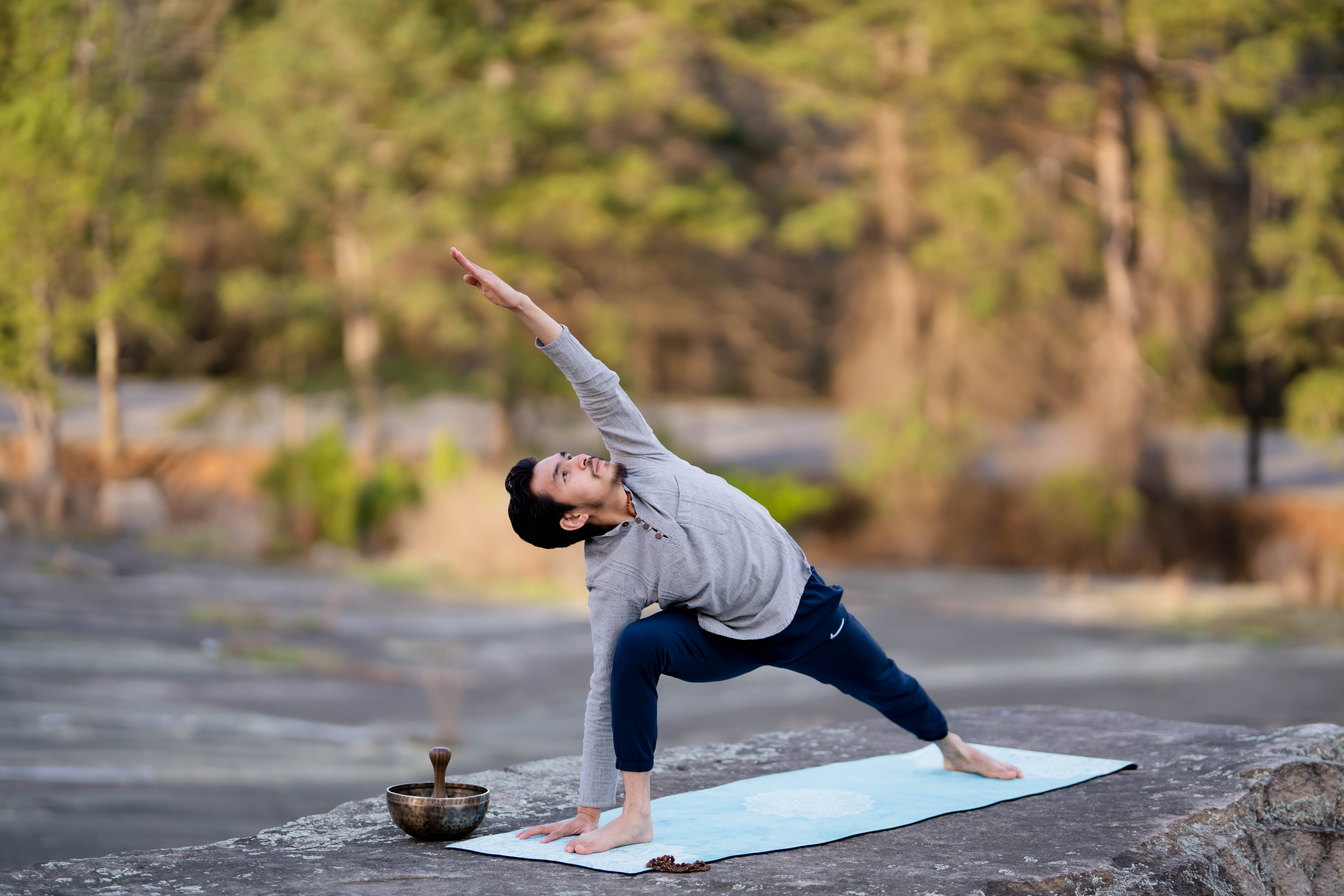Parsvakonasana, also known as Side Angle Pose, is a popular yoga posture that is practiced in many different styles of yoga. This pose is considered a foundational posture, as it is often used as a building block for more advanced poses.

To come into Parsvakonasana, begin in Tadasana (Mountain Pose) at the top of your mat. Step your left foot back about 3-4 feet and turn your left foot out to a 45-degree angle. Bend your right knee to a 90-degree angle, making sure your knee is stacked over your ankle. Bring your right forearm to your right thigh, and reach your left arm up and over your head, stretching your left side body.
In this pose, it is important to keep your knee stacked over your ankle to avoid putting undue pressure on your knee joint. Your left foot should be firmly planted on the ground, with your toes pointing towards the top of the mat.
Parsvakonasana has many benefits, both physical and mental. Physically, this pose stretches the hips, groin, hamstrings, and shoulders. It also strengthens the legs and core muscles, and can help improve balance and stability.
Mentally, Parsvakonasana can be a great pose for cultivating focus and concentration, as it requires both physical and mental effort to maintain proper alignment and balance. It can also help to release tension and stress in the body, promoting a sense of calm and relaxation.
As with all yoga poses, it is important to listen to your body and practice with awareness and intention. If you experience any pain or discomfort in this pose, you should back out of it or modify it as needed. With regular practice, Parsvakonasana can be a powerful tool for improving strength, flexibility, and overall well-being.Here are some of the benefits mentioned :
1. Stretches the hips and groin: Parsvakonasana is an excellent hip opener that helps to stretch the muscles of the hips and groin, improving flexibility and range of motion.
2. Strengthens the legs: This pose engages the muscles of the legs, including the quadriceps, hamstrings, and glutes, helping to build strength and endurance in these areas.
3. Stimulates digestion: The twisting motion of Parsvakonasana can help to stimulate the digestive system, improving digestion and relieving symptoms of indigestion or bloating.
4. Increases lung capacity: The deep breathing that is required in this pose can help to expand the lungs and improve breathing capacity, making it a great pose for those with respiratory issues.
5. Improves balance and stability: As this pose requires balance and stability, practicing it regularly can help to improve overall balance and coordination.
6. Relieves tension in the shoulders and neck: Parsvakonasana stretches the muscles of the shoulders and neck, releasing tension and helping to alleviate pain and discomfort in these areas.
7. Boosts concentration and focus: Holding this pose requires focus and concentration, making it a great pose for improving mental clarity and focus.
8. Calms the mind: The combination of deep breathing and physical movement in this pose can help to calm the mind, promoting feelings of relaxation and reducing stress and anxiety.
To sum up, Parsvakonasana is a versatile pose that provides a wide range of physical and mental benefits, making it a valuable addition to any yoga practice.